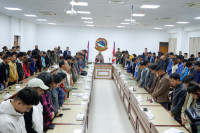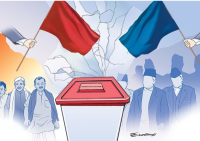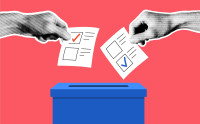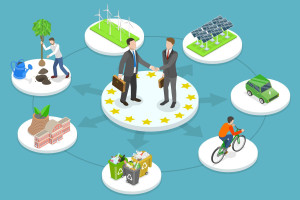Columns
No country for poor people
Government policies are making Nepal’s poor pay for the luxuries and benefits of rich people.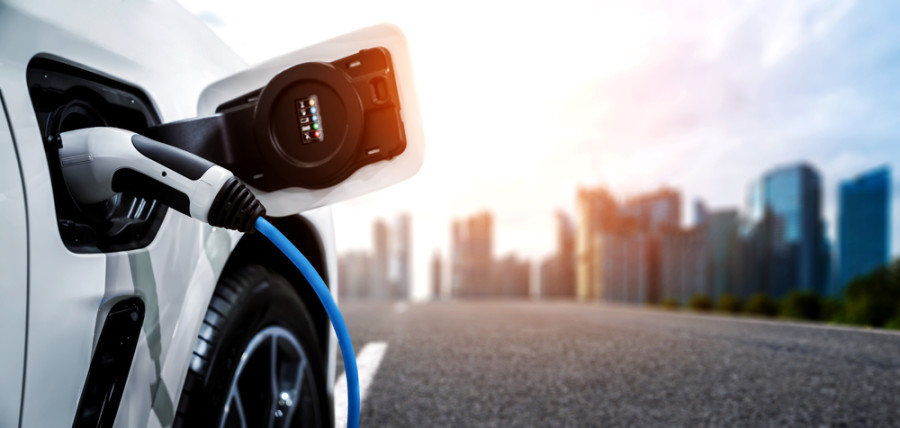
Bishal Thapa
The odds are stacked against Nepal’s poor people. Not only do they need to overcome the hardships of life and eke out a living, but they also need to pay for the rich to indulge in their luxuries.
Like, cars for instance—electric cars to be precise.
Poor tax policies on electric vehicles in Nepal have helped advance the interests of the rich while sacrificing the benefits of the poor.
The need for electric vehicles
Many countries around the world are rapidly switching to electric vehicles. The International Energy Agency, an autonomous intergovernmental energy think tank, forecasts that electric vehicles sales will touch 20 million in 2025, representing approximately 20 percent of the new vehicle market share.
Like the rest of the world, Nepal is also seeking to transition from petrol and diesel (or internal combustion engines) to electric vehicles. It has announced an ambitious goal to phase out ICE vehicles with electric ones by 2031.
Electric vehicles offer significant environmental benefits. They avoid the use of petrol and diesel, both high-emission fossil fuels. This transition will reduce greenhouse gas emissions, and more importantly for Nepal, lower local air pollution.
Electricity sold in Nepal, except for Indian imports that will be used for electric vehicles, comes from hydropower, which has zero emissions. Since Nepal imports all its petrol and diesel, reducing its use will also improve energy security and reduce supply vulnerabilities.
Nepal must undoubtedly transition to electric vehicles. Government policies that encourage that shift should be endorsed and welcomed.
The question is who should pay for those policies. Unfortunately, in Nepal, the poor are bearing that burden—they are paying for rich people to enjoy the benefits of vehicle ownership.
Policies that hurt the poor
Nepal’s policies provide highly concessional import and excise duties for electric vehicles relative to petrol and diesel vehicles. The government applies import and excise duties to the cost of the product, such as vehicles, at customs.
Electric vehicles are required to pay import and excise duties based on their size, measured by the peak motor power. The minimum tax rates are 15 percent and zero percent for import and excise, respectively. Import and excise duties progressively rise to 80 percent and 60 percent, respectively, for the biggest vehicles above 300 kW. In contrast, petrol and diesel vehicles face import and excise duties as high as 288 percent.
A mid-level electric vehicle between 50-100 kW of peak motor power will draw about 65 percent in total customs duties. In contrast, an equivalent petrol vehicle would face duties of approximately 250 percent. All vehicles—electric and internal combustion—face the same value-added tax rate, which is also an additional level of tax subsidy for electric vehicles.
Electric vehicle buyers also receive additional benefits. They face slightly lower road development fees, lower vehicle registration charges and better financing terms.
These benefits, particularly the tax incentives, have added up. Nepal’s sales of electric vehicles are growing annually by around 300 percent, the highest rate of growth in the world. For the first time in 2021-2022, more electric vehicles were imported into Nepal than ICE ones. In 2023-2024, 11,700 electric automobiles were sold, three times the sales of petrol and diesel vehicles.
The National Population and Housing Census, 2021, indicates that only 3 percent of Nepali households currently own a car. The cheapest electric vehicles in Nepal start at around Rs2 million, which would put them out of reach for most households. Public transport remains the dominant choice for most Nepalis.
Unfortunately, not as many electric public transport vehicles are being imported. These vehicles have much higher upfront costs. Although there are no import tariffs for public transport, most operators cannot afford the high upfront costs. The use of electric public transport requires direct government funding to lower the initial costs, as most governments worldwide have done. Nepal has not. Millions of ordinary Nepalis continue to rely on poor-quality, highly polluting diesel-based vehicles, while a small fraction of the rich private vehicle owners have migrated to electric vehicles, thanks to generous Government tax subsidies.
A recent analysis of the tax incentives for electric vehicles at the Institute for Integrated Development Studies (IIDS), a non-profit think tank based in Kathmandu, concluded that “the EV (electric vehicles)-friendly policy appears to primarily benefit the wealthy population.”
The IIDS report estimated that in 2023-2024, the government lost approximately Rs15.6 billion. This lost revenue would have covered the recent cuts in Nepal’s primary health budget between five times over. In February 2025, the government cut Rs3 billion from its major priority health programmes for the current fiscal year in response to reductions in foreign aid inflow. These cuts affected health services that primarily serve the poor, such as maternal and child health, immunisation, nutrition, HIV and tuberculosis.
The IIDS report estimated that in 2023-2024, the tax incentives cost Nepal an additional Rs17 billion in foreign exchange losses. This means that government policies used the foreign exchange remittance earnings of about 30,000 Nepalis working abroad to subsidise 11,700 rich people for their cool electric rides.
These revenue and foreign exchange losses, coupled with the battery replacement costs, more than offset the reductions in petroleum imports. This makes the electric vehicle tax incentives highly distortionary, benefiting only the rich at the expense of the poor.
Need for equitable policies
The transition to electric vehicles must be a key national goal for Nepal. It reduces emissions, local air pollution, oil imports and improves supply risks. But the poor shouldn’t be the only ones paying for these gains.
The tax incentives for electric vehicles are a striking example of Nepal’s policy inequality. This problem is widespread and goes far beyond electric vehicles alone. Nepal’s tax structure on products disproportionately impacts the poor over the rich. Policies must be more equitable so that the poor, without access to political influence, are not the only ones left paying.
There are more equitable ways to achieve Nepal’s goal of increasing electric vehicles. First, rich people don’t need tax subsidies for electric vehicles. They were in the market to buy cars with a 250 percent tariff. They can afford electric vehicles without tax subsidies.
Second, the government could ban the import of petrol and diesel vehicles and raise the import tariffs on electric vehicles to the current levels of non-electric vehicles.
Third, the government could further increase the taxes on petrol and diesel vehicles, and raise the tariffs of electric vehicles to current levels for petrol and diesel vehicles.
Recently, the Government of Nepal hosted Sagarmatha Sambaad—a global dialogue that focused on climate action, sustainability and global partnerships. A key focus of the dialogue was the impacts of climate change on the poor.
The event was hosted in the Soaltee Hotel, a five-star hotel in Kathmandu. Hundreds participated and leading dignitaries attended. Most of them drove (or were driven) to the venue in an electric car. They should be forgiven for not knowing that the poor, on whose behalf they had gathered to speak, had subsidised the electric vehicles that drove them there.




 19.12°C Kathmandu
19.12°C Kathmandu



